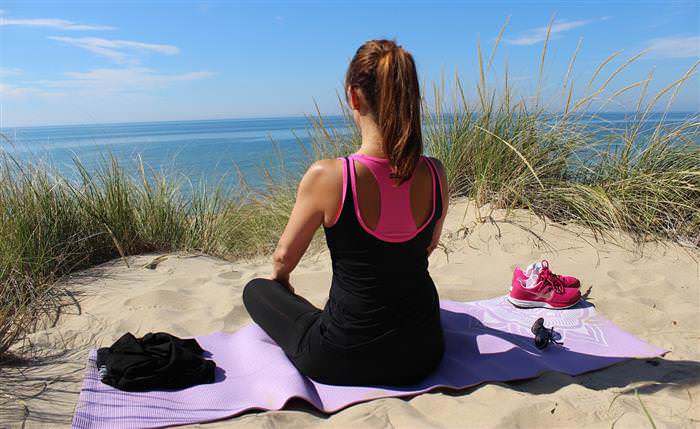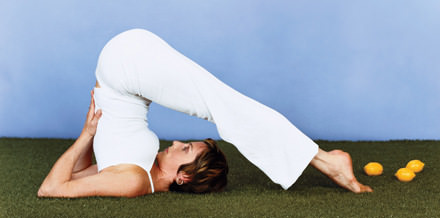
As most of us already know, almost any physical or mental problem can be treated with methods other than artificial drugs, but did you know that you can handle thyroid-related problems with a few simple yoga stretches? As with all other parts of the body, proper functioning of the thyroid gland is closely related to the quality of the blood in it and its components, and various yoga positions can compress the thyroid gland and surrounding lymphatic tissue to extract the blood and lymph fluid stored in it and make room for healthier fluids. This together with a diet conducive to thyroid function, can greatly benefit the thyroid. So, what are you waiting for? Lay out your yoga mat and perform the following exercises to help your thyroid function properly.

In a study that examined the effectiveness of yoga exercises for the proper functioning of the thyroid gland, hormonal changes were found that could improve its activity within one month only with the help of yoga stretches. Participants were divided into two groups; One group performed yoga exercises that help the function of the thyroid gland and the other group performed physiotherapy exercises that help it function for the same amount of time and at the same frequency. Among those who performed yoga exercises, the most significant improvement in thyroid function was seen in the shortest time. The hormonal changes experienced by the first group didn’t appear in the second group, meaning the results show that yoga exercises are more effective and recommended for those with thyroid dysfunction.
It is recommended to perform the following 7 exercises every other day, each stretch for 30 seconds to a minute. You’ll start seeing a positive change in your thyroid function after four weeks, but if you want to enjoy the most effective and healthy activity of the thyroid gland, it is recommended that you continue with these exercises for several months. If you are taking thyroid medication, it is recommended to take blood tests after 3 months, as you may need to reduce their dosage. However, continue to consume them as recommended by your doctor while doing these exercises.
This position stretches the entire upper part of the body, and in addition to thyroid function, it also strengthens the core and spinal muscles, improving the flexibility of the thighs and shoulders.

Notes
Make sure your neck doesn’t drop as this is what is allowing blood supply and oxygen to your head, preventing dizziness. This exercise may cause beginners to feel a bit odd and experience a tingling or nausea, but these are known phenomena that with constant training disappear.
This position strengthens the spine and stretches the chest, shoulders, and abdomen. It also tones the buttocks and helps reduce stress and fatigue. Ancient writings also indicate that it increases body temperature and helps prevent various diseases.

Notes
Be careful not to stretch your neck and lower back too much. To avoid this, keep your gaze towards the floor and concentrate on the movement between the shoulder blades.
This position strengthens the muscles of the back and abdomen, stretches the chest, neck and shoulders, tones the leg muscles, and also helps to reduce menstrual cramps and headaches, stimulates the activity of the reproductive organs and helps alleviate various kidney problems.

Notes
Keep your head forward, but in this case, don’t stretch your neck too much. Look at the sky or the ceiling with your eyes only.
This position also helps to deal with stressful symptoms related to sinus problems, as well as balances blood pressure and heart rate. Sticking your tongue out during the exercise helps alleviate problems related to the vocal cords.

Notes
This may seem strange to you, but sticking your tongue out is a very important part of this exercise and therefore you shouldn’t skip it.
This position helps reduce neck pressure, improves blood flow in the body and helps reduce blood pressure.

Notes
The plow position can create pressure on the spine among those who are not used to regularly doing yoga. In order to reduce your chances of getting injured, you can do an easier version of the position, where you support your back with your hands, and you can place an object to be used as a step where your feet should reach.

This position helps reduce pressure on the lower back, hips, and pelvis, and strengthens and stretches the back.

Notes
How wide your legs are spread can affect the difficulty and comfort of the stretch. Find the width that suits you, where you feel the stretch, but it isn’t painful.
This position helps reduce leg pain and improves digestion. It is especially recommended for people who have to spend many hours during the day standing and athletes. You can also perform it as a post-running or walking stretch, and it is advisable to finish the exercises with it.

Notes
It is recommended not to perform this exercise if you suffer from knee and joint problems.